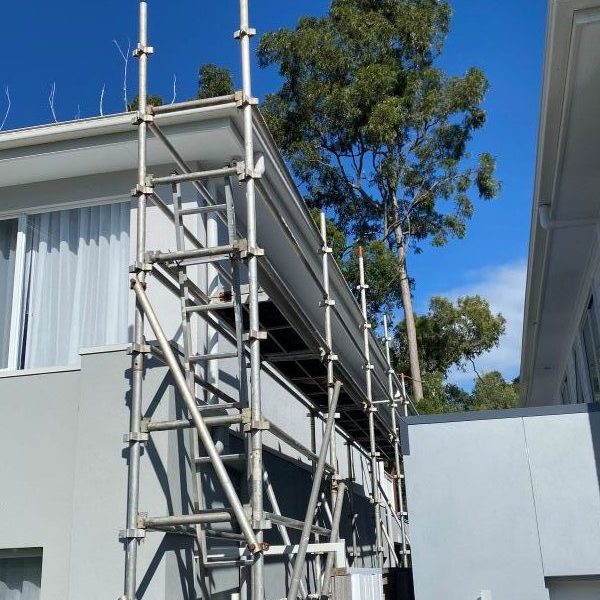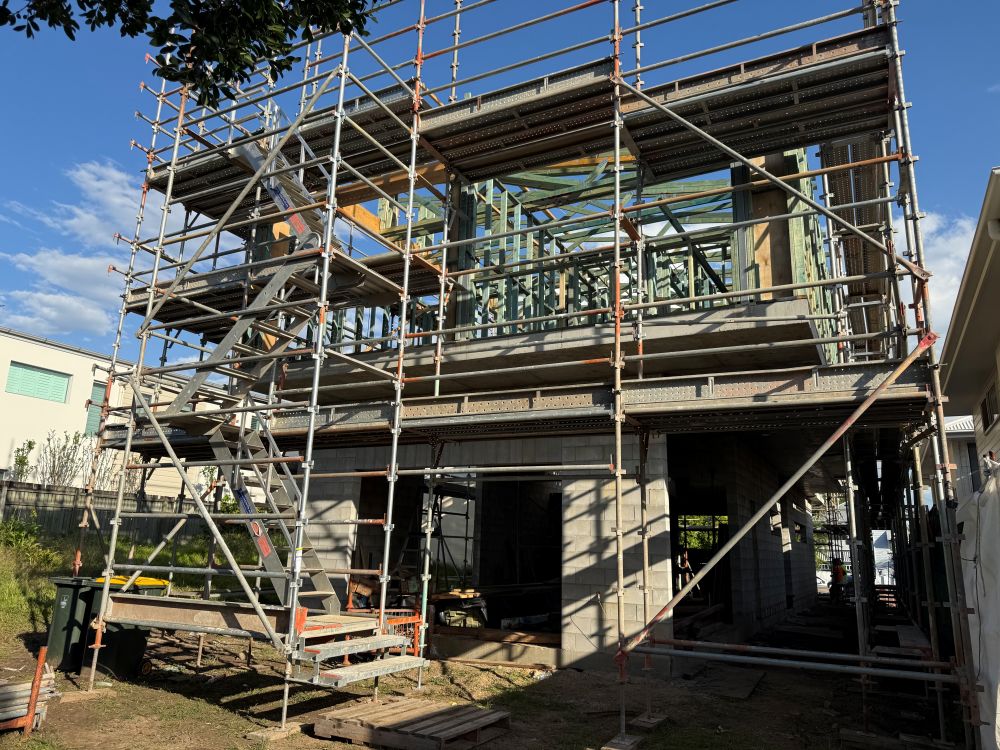Enhancing Scaffold Load Capacity: Essential Insights for Safety and Legal Compliance in Construction Projects
Scaffold load capacity is a fundamental concept in the construction industry, defining the maximum weight a scaffold can safely bear during various construction tasks. This crucial aspect encompasses three primary categories of loads that must be meticulously assessed:
- The weight of the scaffold itself, commonly termed the dead load, which is the inherent weight of the scaffolding structure.
- The weight of workers, tools, and materials placed on the scaffold, identified as the live load, which can fluctuate based on the active work being performed.
- External forces such as wind, rain, or vibrations impacting the scaffolding, known as environmental load, which can significantly affect stability.
Grasping these load categories is vital, as they directly affect the total stress experienced by the scaffold during operational use. Adhering to these calculations is not merely advisable; it is mandated by Australian law to safeguard the well-being of all workers on site.

Comprehensive Step-by-Step Instructions for Effectively Using Our Scaffold Load and Height Calculator
While a universal formula may not exist for every scaffold design, our scaffold calculator offers a straightforward method to obtain precise estimates by streamlining critical variables. This tool is carefully designed for residential builders, homeowners, and scaffold hire professionals who adhere to the guidelines established by Australian OHS standards.
Step 1: Select the Type of Work Required
Begin by identifying the specific nature of the work, which might encompass activities such as roof restoration, external painting, solar panel installation, cladding, or rendering.
Step 2: Indicate the Number of Workers Involved
For instance, you might specify two workers who will be operating concurrently on the scaffold platform to ensure accuracy in load calculations.
Step 3: Estimate the Weight of Materials Needed
This step could involve approximating a total weight of around 120 kg for rendering materials or tools that will be utilised throughout the project, ensuring a realistic assessment.
Step 4: Enter the Height of the Scaffold Platform
For example, you may need to set the height at approximately 4.5 metres above ground level, which is crucial for determining the appropriate scaffold configuration.
Upon entering this information, the calculator will provide a recommended scaffold setup that includes:
- The appropriate duty class (such as Light, Medium, or Heavy) based on the specified loads
- An estimation of the Safe Working Load (SWL) for each bay, ensuring safety compliance
- The recommended type of scaffold (e.g., aluminium tower or steel frame) that best suits the project requirements
- Necessary safety features (such as guardrails, soleplates, and stabilisers) to enhance worker safety
- Any compliance requirements related to height (e.g., tie-offs that are mandatory above 4 metres)
Understanding the Lack of a Universal Load Formula for Scaffolding Applications
Although the scaffold calculator serves as a valuable tool for making informed estimates, scaffolders and engineers do not depend exclusively on a singular formula. This reliance is due to several critical considerations:
- Scaffold systems differ significantly based on material and design (including aluminium, steel, modular, and tube-and-coupler systems), impacting load capacity and stability.
- The intended application plays a crucial role in determining load capacity (for example, painting compared to masonry work necessitates different considerations).
- Various manufacturers provide differing platform strength and component ratings, which can lead to inconsistencies in load calculations.
Standard Industry Method for Calculating Safe Working Load (SWL) Accurately
Professionals typically reference the following formula as a foundational guideline for estimating scaffold load capacities:
Safe Working Load (SWL) per bay = (Platform Load Rating × Safety Factor) – Weight of Scaffold Components
Detailed Example Illustration:
- A platform with a maximum load rating of 600 kg
- Applying a 4:1 safety margin: only utilising 25% of the rating translates to 150 kg
- Subtracting the weight of the scaffold structure, which weighs 100 kg
- The resultant usable working load is 50 kg (this figure serves as a conservative estimate and may not reflect actual planning).
Given the complexities encountered in real-world scenarios, professional scaffolders typically adhere to manufacturer guidelines, engineering tables, and local regulations rather than relying solely on this simplified formula for safety.

Essential Best Practices for Scaffold Evaluations by Industry Professionals
Professional scaffold evaluations generally encompass the following critical aspects:
- Reviewing manufacturer load data and verified span ratings to ensure accuracy and compliance
- Calculating the total live, dead, and environmental loads to ascertain safety and stability
- Ensuring adherence to AS/NZS duty class specifications to conform with industry standards and regulations
- Securing engineering sign-off for any custom or elevated scaffold arrangements to ensure safety
- Conducting comprehensive visual and structural inspections prior to scaffold use to identify and mitigate potential hazards.
Tailoring Scaffold Practices to Environmental Conditions and Site-Specific Factors
Mitigating Wind Exposure in Coastal Queensland
In areas designated within wind zones N3 and N4, the lateral forces impacting scaffolds are markedly increased. Consequently, it is imperative to secure scaffolds at closer intervals, and additional bracing or shade cloth may be required, particularly during periods of high wind, to ensure the structure's stability.
Factors to Consider for Soil and Ground Types
When encountering unstable or inclined soil conditions, it is essential to utilise soleplates and adjustable base jacks to enhance the stability of the scaffold. Furthermore, sites with uneven elevations may necessitate the implementation of levelled bay systems to uphold a safe working environment for all personnel.
Regulatory Requirements for Work Above Four Metres
In Queensland, any platform that exceeds four metres in height requires thorough inspection and certification. A scaffold handover certificate is mandated under the Work Health and Safety Regulation 2011, ensuring compliance with established safety standards and protocols.
Key Safety Regulations Essential for Compliance
- Work Health and Safety Regulation 2011 (QLD)
- Managing the Risk of Falls at Workplaces (Code of Practice, 2021)
- AS/NZS 1576 and AS/NZS 4576 Standards pertinent to scaffold safety and operational practices
- High Risk Work Licence (HRWL) is a prerequisite for any scaffold setup exceeding four metres in height.
Site supervisors bear the responsibility of conducting regular scaffold inspections, particularly following adverse weather conditions or significant changes in scaffold height or load, to ensure ongoing compliance with safety regulations and protect worker safety.
Illustrative Case Study: Scaffold Implementation in Robina
In a recent undertaking in Gold Coast, a homeowner in Robina required scaffolding services to repaint and render a two-storey exterior wall. The working height for this project was established at five metres, with two tradespeople utilising approximately 200 kg of rendering materials and tools throughout the duration of the work.
Utilising our scaffold calculator, the proposed configuration was as follows:
- Scaffold class: Medium Duty, deemed suitable for the task at hand
- System type: Steel frame with timber planks to ensure durability and support
- Additional safety measures: Full edge protection, soleplates for soft earth conditions, and wind mesh to diminish wind exposure risks
The scaffold successfully passed all necessary inspections and complied with Queensland’s OHS regulations, resulting in no downtime throughout the entire project.
Critical Considerations for Calculating Scaffold Height and Load Capacity Accurately
Determining scaffold height and load capacity should never be approached as a matter of speculation. In residential projects, this meticulous process is vital for ensuring safety, effectively managing costs, and achieving compliance with local regulations.
Given the unique requirements applicable to Australian conditions, particularly in southeast Queensland, we strongly recommend obtaining an accurate scaffolding quote and ensuring that all installations are conducted by certified professionals to guarantee safety and compliance.
Reach Out to CanDo Scaffolding Hire for Expert Advice and Comprehensive Services
For further information regarding our extensive range of services, please do not hesitate to contact us at 1300 226 336 or send an email to theguys@cando.com.au at your convenience.
We provide a diverse selection of scaffolding solutions, including void protection platforms and roof edge protection, specifically tailored to meet the needs of any residential or light commercial construction project.
Understanding Scaffold Load Capacity for Residential Projects
The Article: Scaffold Load Capacity Insights for Residential Projects first appeared on https://writebuff.com
The Article Scaffold Load Capacity for Residential Construction Projects Was Found On https://limitsofstrategy.com

